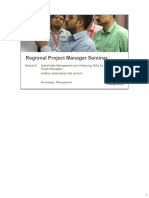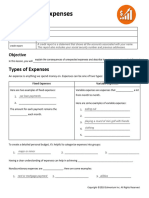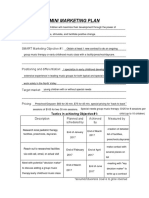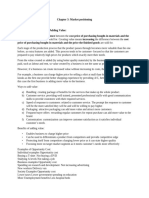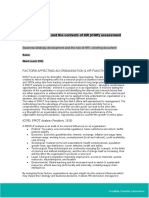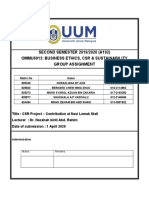0 ratings0% found this document useful (0 votes)
8 viewsEdexcel As Chapter 20
Edexcel As Chapter 20
Uploaded by
h.nuzhatCopyright:
© All Rights Reserved
Available Formats
Download as DOCX, PDF, TXT or read online from Scribd
Edexcel As Chapter 20
Edexcel As Chapter 20
Uploaded by
h.nuzhat0 ratings0% found this document useful (0 votes)
8 views3 pagesOriginal Title
Edexcel as Chapter 20
Copyright
© © All Rights Reserved
Available Formats
DOCX, PDF, TXT or read online from Scribd
Share this document
Did you find this document useful?
Is this content inappropriate?
Copyright:
© All Rights Reserved
Available Formats
Download as DOCX, PDF, TXT or read online from Scribd
Download as docx, pdf, or txt
0 ratings0% found this document useful (0 votes)
8 views3 pagesEdexcel As Chapter 20
Edexcel As Chapter 20
Uploaded by
h.nuzhatCopyright:
© All Rights Reserved
Available Formats
Download as DOCX, PDF, TXT or read online from Scribd
Download as docx, pdf, or txt
You are on page 1of 3
Chapter 20: Entrepreneurial Motives and Characteristics
Characteristics of Entrepreneur: ________________________________
Innovative (creative to form new ideas) ________________________________
Risk taker (mindset to accept the uncertainty of future)
________________________________
Commitment and self-motivation ( continuing even in great stress)
Self-determination (keeping control over the business and changes) ________________________________
Judgment (ability to gather information and take advice to take decision) ________________________________
Perseverance (capability to survive during bad phases and setbacks)
________________________________
Initiative takers (being proactive)
Multi skilled (ability to do number of tasks including: record keeping, ________________________________
promoting business, recruiting etc.) ________________________________
Leadership skills: (ability to encourage people to work and motivate them,
________________________________
Style: Democratic/ autocratic and laizze fair)
Confidence ( not getting discouraged by failure and overcome the setbacks) ________________________________
________________________________
Skills required by entrepreneurs: ________________________________
a. Organising: ability to choose the appropriate resources and combine them
together profitably to produce products at a price the consumer is willing to ________________________________
pay. Organizing and coordinating resources to set up and run business venture. ________________________________
Includes: planning, scheduling, instructing, prioritizing, system setup, ________________________________
monitoring, time management and meeting deadlines. If not met need to “fire-
________________________________
fight” means resolving the conflicts.
b. Financial management: Budgeting, predicting and monitoring cash flow, ________________________________
recording and updating financial transactions, arranging loans, analysing ________________________________
financial information, collecting debts etc.
________________________________
c. Communication: with internal and external stakeholder. Selecting and
implementing effective and fast communication system that need to be ________________________________
followed by the entire organization. Also focusing on developing the ________________________________
communication skill that can help to easily and effectively convey the
________________________________
instruction without harming the relationship with the parties. Able to write:
letters, emails, memos. ________________________________
d. Managing people/Human Resource management: Ensure relevant number of ________________________________
workers with relevant skills are available. Being able to become a motivating, ________________________________
inspiring and effective leader. Includes: manpower analysis, recruitment,
selection, identifying need for training and motivation. Also being able to ________________________________
direct the people towards the goals of the business. ________________________________
e. Decision making: able to solve problem and take decision according to the ________________________________
demand of the situation by analysing and evaluating the information gathered
________________________________
by observation and suggestion from other.
f. Negotiating: being calm and confident while developing logical argument and ________________________________
also being positive towards compromise if it is beneficial while negotiating so ________________________________
that solution can be taken which is accepted/ agreed by both the parties.
________________________________
g. IT Skills: setting up a filing system to store documents, communicating via IT ________________________________
(email/ messengers), using different types of software to: record ________________________________
information/data, design document (invoice, job description etc.)/ making
________________________________
presentation to inform the client about different proposals or ideas/ design
products, setting up business website, using social media to build PR. ________________________________
h. Marketing: so that the products meet the consumers’ needs in terms of product, ________________________________
price, place and promotion (4 Ps)
________________________________
i. Objectives: making sure that aims and targets of business are met in a planned
way with appropriate strategies used ________________________________
j. Coordination: All the functional departments work together to achieve ________________________________
corporate objectives (finance, marketing, operations, HRM)
________________________________
Reasons to setup business:
a. Financial motives: Profit making ________________________________
i. Profit maximization: Earning maximum profit possible at a given period of ________________________________
time especially if the RnD cost is very high than to cover it up quickly ________________________________
ii. Profit satisficing: Earning enough profit that can support the requirement of the
owner ________________________________
b. Non-financial motives: ________________________________
i. Ethical stance: Setting up a business on the basis of one’s moral beliefs ________________________________
ii. Social enterprise: A social enterprise is a business with mainly social
________________________________
objectives that reinvests most of its profits into benefiting society rather than
maximizing return to owners. ________________________________
The features of Social enterprises: ________________________________
a. Are set up to make a difference to society with a clear social/ environmental
________________________________
mission
b. Need to make a surplus or profit by all ethical means to survive as they do not ________________________________
rely on donations as charities do ________________________________
c. Reinvest profit for social purpose
________________________________
d. Operate in a range of size and structures
They must have a business structure that is different from the normal ________________________________
partnership, or joint stock companies, because of their social motive, so the use ________________________________
of profit, and the trading of products or services might be different from that of ________________________________
the other normal enterprises that have a profit motive.
Examples include cooperatives, community enterprises and non-profit ________________________________
organizations. These: Provide employment for drug addicts and recovering ________________________________
them, Increase employment for women, Recycle furniture to low income ________________________________
households, Improve local environment by clearing litter and lands
________________________________
Triple Bottom Line: (Objectives of Social Enterprise)
The ‘triple bottom line’ approach goes beyond the traditional measures of ________________________________
profits, return on investment, and shareholder value. TBL offers much more ________________________________
socially responsible and valuable business performance taking into account the
________________________________
welfare of the community. It includes economic, social and environmental
dimensions – profits, people and the planet. ________________________________
1. Economic (Profit): make profits to reinvest back into the business and the ________________________________
local / national economy as well as to shareholders. ________________________________
2. Social (People): provide jobs or local support to disadvantaged sections of ________________________________
the community
________________________________
3. Environmental (Planet): protect the environment and manage the business in
an environmentally sustainable way ________________________________
iii. Independence: Setting up business to run on one’s accord and being able to ________________________________
make all the decisions rather than working under others
________________________________
iv. Working from home: Setting up work at home for one’s own convenience. The
benefits are: a) the time and expenses of travelling can be saved and b) ________________________________
Enjoying flexibility as they can work on their preferred time. ________________________________
________________________________
Impact of enterprise on a country’s economy: ________________________________
i. Employment creation by setting up a new business, more jobs are created ________________________________
directly into the business and indirectly by encouraging ancillary or supporting ________________________________
businesses to form.
ii. Economic Growth: GDP (Gross Domestic Product) increases as the demand ________________________________
increases due to improved living standard of the population. It also increases ________________________________
tax revenue of the government due to increased output and consumption. ________________________________
iii. Firms’ survival and growth will benefit economy as the surviving businesses
________________________________
become very important to the economy since they are likely to employ large
number of workers and may take place of declining businesses that struggle to ________________________________
survive due to changes in consumer choices and technology. ________________________________
iv. Innovation and technological changes as new business tend to be more
________________________________
innovative and creative, they are more likely to bring in new and updated
technologies to the country which can make the country more advanced and ________________________________
competitive in the international market. ________________________________
v. Exports bring more currency reserve to the country. Therefore, it can improve
________________________________
the value of the nation’s exports and competitiveness
vi. Personal development helps an individual towards self-actualization. ________________________________
Therefore, it can help them to utilize their skills properly and motivate to ________________________________
become successful. ________________________________
vii. Increased Social Cohesion: People of the society will be more willing to
cooperate with each other in order to survive and prosper. ________________________________
________________________________
________________________________
________________________________
________________________________
You might also like
- Happy Organizations Edited 0103Document167 pagesHappy Organizations Edited 0103Thi Hoai Anh BuiNo ratings yet
- Diagnostic Exam in Entrepreneurship - StudentsDocument6 pagesDiagnostic Exam in Entrepreneurship - Studentscristynvil100% (3)
- Edexcel AS Chapter 22Document4 pagesEdexcel AS Chapter 22h.nuzhatNo ratings yet
- Edexcel As Chapter 21Document3 pagesEdexcel As Chapter 21h.nuzhatNo ratings yet
- Bisnis WellingtonDocument4 pagesBisnis WellingtonWilson TakatinNo ratings yet
- Edexcel As Chapter 2Document8 pagesEdexcel As Chapter 2h.nuzhatNo ratings yet
- LESSON#1: Personal Entrepreneurial CompetenciesDocument3 pagesLESSON#1: Personal Entrepreneurial CompetenciesCatherine Bercasio Dela CruzNo ratings yet
- 09 Stakeholders Influencing 2015Document41 pages09 Stakeholders Influencing 2015Shabry SamoonNo ratings yet
- Advanced Social Media Marketing Project 2: Converged MediaDocument5 pagesAdvanced Social Media Marketing Project 2: Converged MediaSAURABH BHANDARINo ratings yet
- Edexcel As Chapter 1Document13 pagesEdexcel As Chapter 1h.nuzhatNo ratings yet
- G11-Entrepreneurship Answer Sheets Module 1: Understanding The 4Ms of OperationsDocument3 pagesG11-Entrepreneurship Answer Sheets Module 1: Understanding The 4Ms of OperationsFergus GerodiasNo ratings yet
- Principles of Microeconomics - Notes - IntroductionDocument4 pagesPrinciples of Microeconomics - Notes - IntroductionKatherine SauerNo ratings yet
- Periodic ExamDocument2 pagesPeriodic ExameestoqueNo ratings yet
- Your Business ChecklistDocument12 pagesYour Business ChecklistGerson FloresNo ratings yet
- Busines Plan FinalDocument24 pagesBusines Plan FinalVictoria Quebral Carumba100% (1)
- Operations Strategy: Learning ObjectivesDocument8 pagesOperations Strategy: Learning ObjectivesMolood MelodyNo ratings yet
- Business Plan OutlineDocument10 pagesBusiness Plan OutlineElla JeanNo ratings yet
- Business Activity RWS Y10Document8 pagesBusiness Activity RWS Y10AFAN NOMANINo ratings yet
- Business7 Mid Second Term 2024Document2 pagesBusiness7 Mid Second Term 2024自生度No ratings yet
- Worksheet 0Document4 pagesWorksheet 0Ambrose OnapaNo ratings yet
- Trainees-Record-Book-Skei-Bpp (1) MaricrisDocument10 pagesTrainees-Record-Book-Skei-Bpp (1) MaricrisRosalina BarriosNo ratings yet
- Assignment 4 203 - 202201Document6 pagesAssignment 4 203 - 202201zaherNo ratings yet
- Product and Service DesignDocument7 pagesProduct and Service DesignK K SHARMA100% (1)
- Business Plan TemplateDocument2 pagesBusiness Plan TemplateChristan JoseNo ratings yet
- Authentic Lecture - Summary NotesDocument2 pagesAuthentic Lecture - Summary NotesVũ Thuỳ LinhNo ratings yet
- Lesson 3 WorkbookDocument8 pagesLesson 3 Workbookbikash837No ratings yet
- Activity. Business PlanDocument2 pagesActivity. Business PlanDanica HerealwaysNo ratings yet
- SLM Chs 10 Pecs FinalDocument9 pagesSLM Chs 10 Pecs FinalJose Intraboy Arais Tabugoc Jr.No ratings yet
- Sales - One Page Sales PlanDocument1 pageSales - One Page Sales PlankevinloctranNo ratings yet
- Diagnostic Exam in EntrepreneurshipDocument6 pagesDiagnostic Exam in Entrepreneurshipmerlyn m romerovNo ratings yet
- Types of Business Organisation: Textbook, Chapter 4 (PG 35-51)Document12 pagesTypes of Business Organisation: Textbook, Chapter 4 (PG 35-51)Vincent ChurchillNo ratings yet
- Guided Notes - Planning For ExpensesDocument5 pagesGuided Notes - Planning For Expensesrebaamoshy50% (2)
- Exam in Entrepreneurship StudentsDocument6 pagesExam in Entrepreneurship StudentsWENCY MAISOGNo ratings yet
- Chapter 6 WorkbookDocument8 pagesChapter 6 Workbooks1857591No ratings yet
- Economic SurveyDocument4 pagesEconomic SurveyPAPAGRAND MOVERS CORP.No ratings yet
- Economic SurveyDocument4 pagesEconomic SurveyPAPAGRAND MOVERS CORP.No ratings yet
- Handouts CVP AnalysisDocument6 pagesHandouts CVP AnalysisAissa OrbitaNo ratings yet
- Naisud National High School Senior High School: Final Examination in Organization and ManagementDocument2 pagesNaisud National High School Senior High School: Final Examination in Organization and ManagementRupelma Salazar PatnugotNo ratings yet
- 151 STUDENT WorksheetDocument17 pages151 STUDENT WorksheetslayygirlyhzhNo ratings yet
- Economic Systems Notes: There Are - Economic Systems. The Big Economic QuestionsDocument1 pageEconomic Systems Notes: There Are - Economic Systems. The Big Economic QuestionsHannah DonleyNo ratings yet
- Module 1 Answer KJSMDocument24 pagesModule 1 Answer KJSMKier MahusayNo ratings yet
- Fill in The BlanksDocument2 pagesFill in The BlanksababsenNo ratings yet
- 202 Things You Can Buy and Sell For Big Profits - James StephensonDocument344 pages202 Things You Can Buy and Sell For Big Profits - James StephensonKhôi PhanNo ratings yet
- 5 80 5 Multipler WorksheetDocument2 pages5 80 5 Multipler WorksheetSeyram BoumekpoNo ratings yet
- Business Ethics and Social Responsibility Second Edition: PhilanthropyDocument2 pagesBusiness Ethics and Social Responsibility Second Edition: PhilanthropyAngel MagtaasNo ratings yet
- The Firm and Its Environment Chapter QuizDocument2 pagesThe Firm and Its Environment Chapter QuizAnne Deligos100% (1)
- Weeks 3-4 - 3rd Quarter - Business SimulationmoduleDocument13 pagesWeeks 3-4 - 3rd Quarter - Business Simulationmodulemycah hagadNo ratings yet
- Fundamentals of Customer Engagement Exam: March 31, 2018Document5 pagesFundamentals of Customer Engagement Exam: March 31, 2018JackNo ratings yet
- GR 7 PastDocument2 pagesGR 7 PastKenNo ratings yet
- Motivating Workers: Textbook, Chapter 6 (PG 64-76)Document10 pagesMotivating Workers: Textbook, Chapter 6 (PG 64-76)Vincent ChurchillNo ratings yet
- MINI MARKETING PLAN - Individualized PDFDocument3 pagesMINI MARKETING PLAN - Individualized PDFMichelle Dalton NettleNo ratings yet
- Business Finance - LAS - q1 - w1 Introduction To Financial Management PDFDocument9 pagesBusiness Finance - LAS - q1 - w1 Introduction To Financial Management PDFJustineNo ratings yet
- Pec Booklet Module TleDocument8 pagesPec Booklet Module TleMARIO BUENAVENTENo ratings yet
- The Entrepreneur's Guide to Small Business Management: Strategies for SuccessFrom EverandThe Entrepreneur's Guide to Small Business Management: Strategies for SuccessNo ratings yet
- Ignite: The Entrepreneur's Journey: The Entrepreneur's Journey: Unleashing Entrepreneurial SuccessFrom EverandIgnite: The Entrepreneur's Journey: The Entrepreneur's Journey: Unleashing Entrepreneurial SuccessNo ratings yet
- FROM IDEA TO PROFIT: A Guide for New Entrepreneurs on Building a Successful Business: Get Your Finances In OrderFrom EverandFROM IDEA TO PROFIT: A Guide for New Entrepreneurs on Building a Successful Business: Get Your Finances In OrderNo ratings yet
- Edexcel. O Level, Business Chapter 11-18Document19 pagesEdexcel. O Level, Business Chapter 11-18h.nuzhatNo ratings yet
- Edexcel, Business Chapter 1-10Document12 pagesEdexcel, Business Chapter 1-10h.nuzhatNo ratings yet
- Edexcel As Chapter 3Document2 pagesEdexcel As Chapter 3h.nuzhatNo ratings yet
- Edexcel As Chapter 17Document7 pagesEdexcel As Chapter 17h.nuzhatNo ratings yet
- Edexcel As Chapter 1Document13 pagesEdexcel As Chapter 1h.nuzhatNo ratings yet
- Chapter 1, Enterprise (CIE)Document13 pagesChapter 1, Enterprise (CIE)h.nuzhatNo ratings yet
- Edexcel As Chapter 16Document5 pagesEdexcel As Chapter 16h.nuzhatNo ratings yet
- CL 9, Business, Revision (Command Words)Document11 pagesCL 9, Business, Revision (Command Words)h.nuzhatNo ratings yet
- Bahaguna 2022Document19 pagesBahaguna 2022calae.ddNo ratings yet
- Joshua B. Lenart, PH.D.: WebsiteDocument9 pagesJoshua B. Lenart, PH.D.: Websiteapi-638337248No ratings yet
- Banana VCin Ethiopia AsmiroDocument11 pagesBanana VCin Ethiopia AsmirovipinNo ratings yet
- Environmental, Economic, and Social Parameters in International Green Building Rating ToolsDocument8 pagesEnvironmental, Economic, and Social Parameters in International Green Building Rating ToolsDaryl GervacioNo ratings yet
- An Investigation Into The Concept of Sustainability and Its Effect On Responsible Supply Chain and Logistics in UKDocument16 pagesAn Investigation Into The Concept of Sustainability and Its Effect On Responsible Supply Chain and Logistics in UKGhanva KhanNo ratings yet
- Resubmission - CIPD Level 5 HR CHR Assessment Template v1.0Document7 pagesResubmission - CIPD Level 5 HR CHR Assessment Template v1.0Viv123No ratings yet
- MOD 1 - Introduction On Cost AccountingDocument10 pagesMOD 1 - Introduction On Cost Accountingzach thomasNo ratings yet
- Week 14 Business Leadership Ethics - Ethics and Morality in BusinessDocument42 pagesWeek 14 Business Leadership Ethics - Ethics and Morality in Businessrags9007No ratings yet
- Chapter 6 - Corporate ReportingDocument10 pagesChapter 6 - Corporate ReportingDlamini SiceloNo ratings yet
- Digital Human Modeling and Applications in Health, Safety, Ergonomics and Risk ManagementDocument393 pagesDigital Human Modeling and Applications in Health, Safety, Ergonomics and Risk ManagementshreyaNo ratings yet
- BSS053-6 Sustainable Business ManagementDocument21 pagesBSS053-6 Sustainable Business ManagementUmme HafsaNo ratings yet
- Transportation Research Part E: Indranil Biswas, Alok Raj, Samir K. SrivastavaDocument14 pagesTransportation Research Part E: Indranil Biswas, Alok Raj, Samir K. SrivastavaItalo ViracochaNo ratings yet
- Kewajiban Corporate Social Responsibility CSR OlehDocument15 pagesKewajiban Corporate Social Responsibility CSR OlehcharlessNo ratings yet
- MFS: TBL: by Mayur GujarDocument7 pagesMFS: TBL: by Mayur GujarGujar DwarkadasNo ratings yet
- Sustainability Reporting ICAIDocument56 pagesSustainability Reporting ICAIaminjagNo ratings yet
- Stakeholder TheoryDocument11 pagesStakeholder Theoryayush.20203044No ratings yet
- LakersDocument14 pagesLakersapi-590511837No ratings yet
- WCM QuizDocument33 pagesWCM QuizbalaNo ratings yet
- TREND ANALYSIS - Fraud and Fraud Detection PDFDocument54 pagesTREND ANALYSIS - Fraud and Fraud Detection PDFShalini VeluNo ratings yet
- The Environment of Management: Management Dynamics Prof. Joy PollosoDocument52 pagesThe Environment of Management: Management Dynamics Prof. Joy PollosoCuster CoNo ratings yet
- Mcdonald 2011Document16 pagesMcdonald 2011Andra ModreanuNo ratings yet
- Environmental Factors: Affecting Sustainable ProcurementDocument9 pagesEnvironmental Factors: Affecting Sustainable ProcurementNaimur RahamanNo ratings yet
- Ethics MCQDocument22 pagesEthics MCQIshita RanaNo ratings yet
- Wawa Mgt162Document2 pagesWawa Mgt162Airani IdaniNo ratings yet
- TA13 New Accounting Reports Decrypted OptDocument14 pagesTA13 New Accounting Reports Decrypted OptMarsha Sabrina LillahNo ratings yet
- Ghillyer6e PPT Ch04Document13 pagesGhillyer6e PPT Ch04Tiên TiênNo ratings yet
- Chapter 5Document13 pagesChapter 5عبيدة محاميدNo ratings yet
- Auditing and Corporate Governance AssignmentDocument32 pagesAuditing and Corporate Governance AssignmentSiddhi GargNo ratings yet
- Chapter 4 - Social EnvironmentDocument8 pagesChapter 4 - Social EnvironmentvickyNo ratings yet
- SEE2204 Sem 20 21B Lecture 13 Smart Resilient Cities CompressedDocument53 pagesSEE2204 Sem 20 21B Lecture 13 Smart Resilient Cities CompressedMing Lim ChanNo ratings yet







